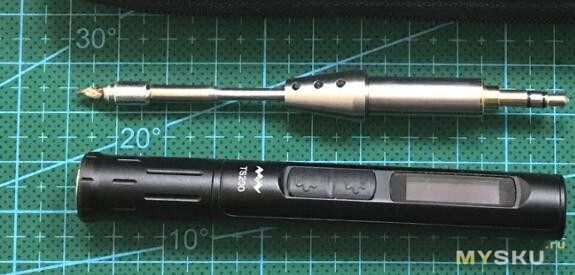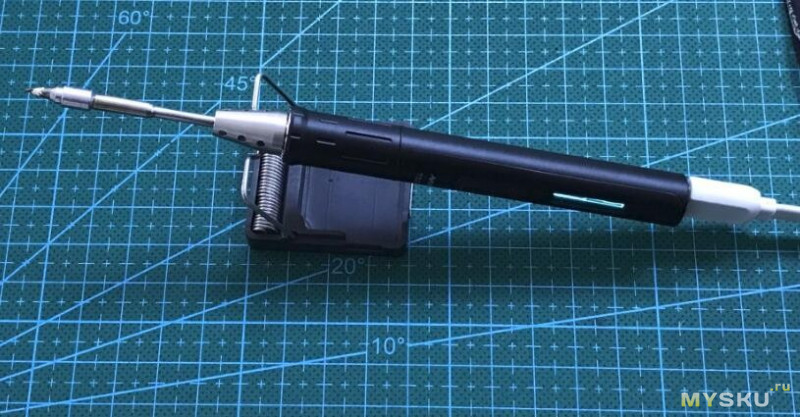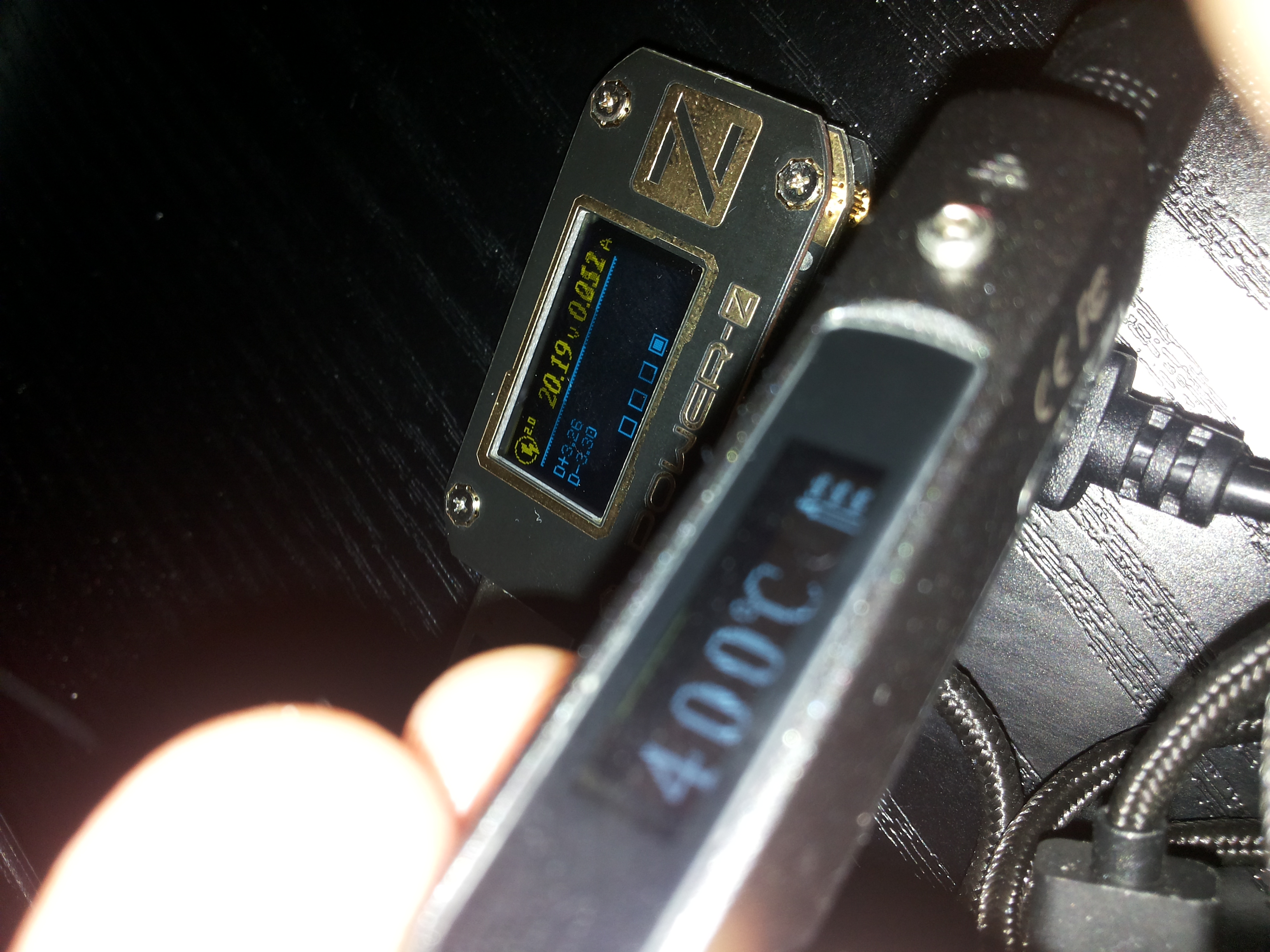USB-C QC is not that intelligent. It simply reacts to data lines voltage:
| D+ | D- | VCC |
|---|---|---|
| 0.6V | GND | 5V |
| 3.3V | 0.6V | 9V |
| 0.6V | 0.6V | 12V |
| 3.3V | 3.3V | 20V |

See Qualcomm Quick Charge 2.0 protocol specification and support.
So 20 volts is actually very simple to get, except there are very few Class B (20v capable) devices on the market, most of them are 12v max. If you feed both data lines +3.3v, the power source will switch to the maximal voltage it's capable of.
Sadly USB Type-C is much larger than microusb and probably won't fit inside.
For starters you can get power from the QC-capable device using Quick Charge Adapter.
It actually works:









Hey, a few weeks ago I got a pretty awesome idea: would it be possible to hack this iron into having USB-C PD input?
The USB-C specs allows for 3A at 20V, or even 5A. This would mean that it would be able to power the iron from like any common available charger. Sadly I don't have the knowledge nor the skills to pull this off .
Wouldn't that be pretty awesome? :D
I did some research and fount out that the STM32F0 devices can be used for USB-C PD. The STM32 in this TS100 is a STM32F1 and seems currently not supported. But my knowledge about STM32's and USB PD is very limited, maybe someone out there is able to tell us more.